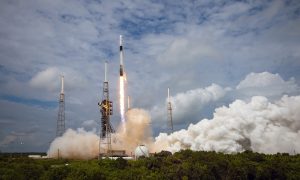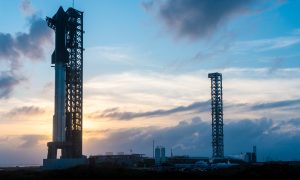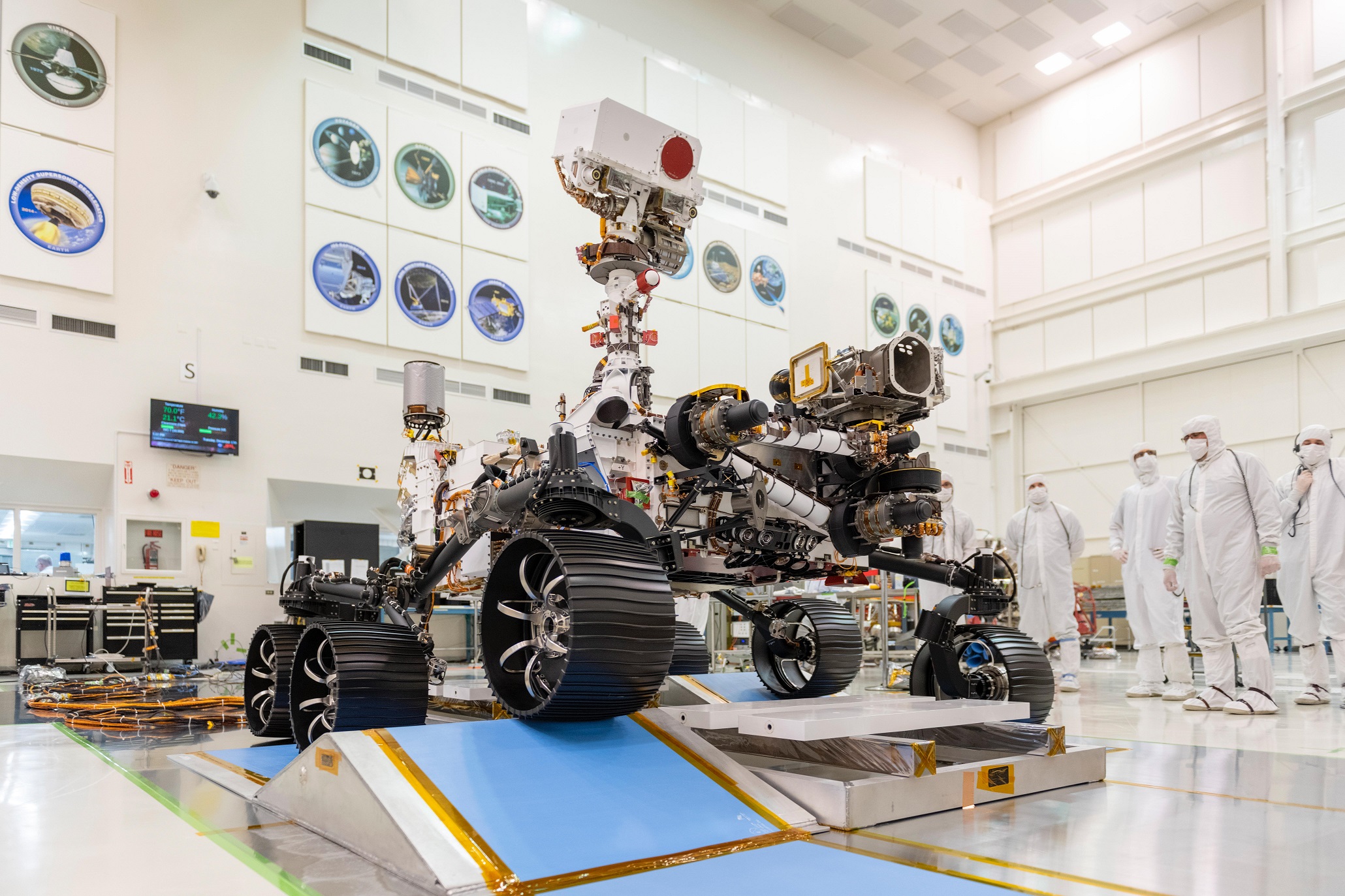

Space
NASA’s next Mars rover will pave the way for humans
NASA’s Mars 2020 rover is scheduled to land on the red planet in February 2021, and when it does, it will touch down in Jezero Crater, the site of an ancient lake that existed 3.5 billion years ago. The next generation rover, which will get an official name soon, will build on the success of the robotic explorers who came before it by collecting the first samples of Mars for a future return to Earth.
But the new rover will also lay the groundwork for future human exploration by testing new technologies.
The Mars 2020 rover, which looks nearly identical to the Curiosity rover that landed in 2012, will begin its mission exploring Jezero Crater. The six-wheeled rover is equipped with a suite of instruments designed to help it look for signs of life called biosignatures.
Artist rendition depicting the early Martian environment (right) versus the Mars we see today (left). Credit: NASA’s Goddard Space Flight Center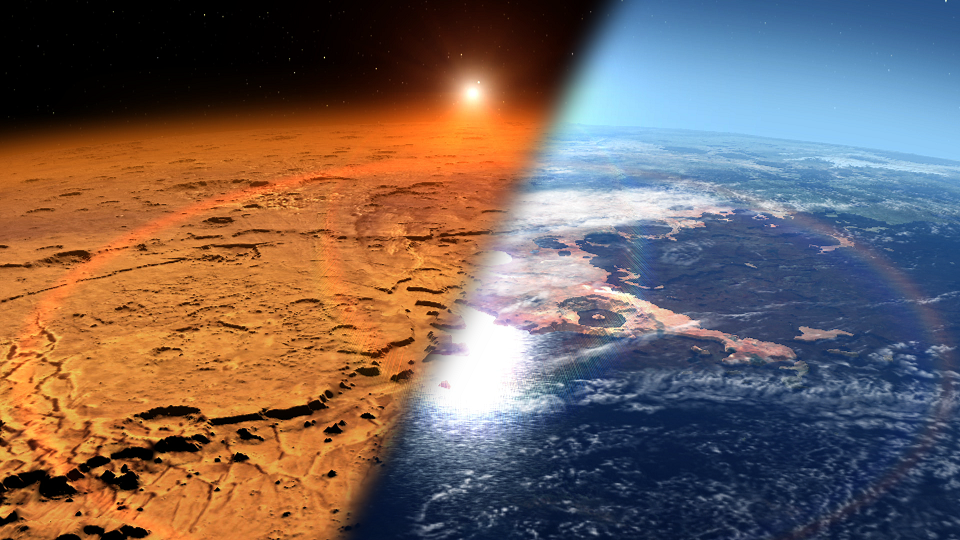
NASA believes that Mars was habitable sometime in its past. The inhospitable desert-like planet we see today was not always the case. Mars’ once ample atmosphere eroded over time, stripped away by solar particles, resulting in the thin atmosphere we see today.
But so far, we haven’t been able to detect any real signs of ancient life yet. The rover’s team thinks that its specialized suite of instruments will change that.
The twin Mars Exploration Rovers (Spirit and Opportunity) were tasked with finding evidence of water, and they were successful right out of the gate. The Mars Science Laboratory (aka Curiosity) was designed to understand habitability and if the conditions were right for life. Now, the Mars 2020 rover will take that one step further and search for actual signs of life.

Artist rendition depicting the early Martian environment (right) versus the Mars we see today (left). Credit: NASA’s Goddard Space Flight Center
The 2020 rover will do so by drilling into its surroundings and extracting samples that will be returned to Earth at a later time. Returning the samples is a challenge that NASA is already starting to tackle. The agency estimates that the earliest it can send a mission to fetch the rover’s samples would be some time around 2026 or 2027.
In the meantime, 2020 will be busy sciencing the heck out of Mars to search for microbial life as well as testing out technologies that future human missions will rely on.
Here’s how four of those instruments will work.
Terrain Relative Navigation
Landing on Mars is tricky. To date, only about half of the missions attempted have successfully touched down on the red planet. The 2020 rover will be equipped with a specialized feature to help it avoid any potential hazards in the landing zone.
Past missions, like Curiosity, needed a landing spot that was free of debris (like rocks, boulders, etc). But 2020 will be able to navigate around them. That’s because the rover is equipped with a unique lander vision system. This system take pictures during the parachute descent stage. It then compares those images to an onboard map.
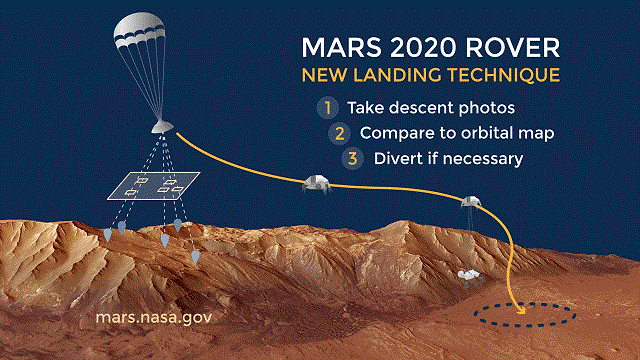
A view of how the terrain-relative navigation works. Credit: NASA/JPL_Caltech
The computer matches the map (which is created from orbital imagery), to create a guide that can identify landmarks such as craters and mountains.
The system then ranks landing sites based on safety, and can even identify a hazard. The Mars 2020 mission will be the first to test out this new system. If all goes well, it will be used on future missions, including human missions to Mars and even the moon.
MOXIE
Astronauts traveling to Mars will need oxygen to breathe and to use as rocket fuel. However, hauling it with the other cargo is expensive and not a viable solution. The Mars 2020 rover is equipped with an instrument on called the Mars Oxygen In-Situ Resource Utilization Experiment (MOXIE for short).
MOXIE will convert carbon dioxide (a gas that’s abundant on Mars) into the oxygen, which astronauts can use as needed. 2020 is equipped with a small, prototype version of the equipment needed for future human missions.
The team will study how the experiment performs and use that data to scale up the technology to use on subsequent missions. But how will it work?
MOXIE can only run for a few hours at a time, and only about once a month. (That’s because the system uses a full day’s worth of rover power each time it runs.) Humans use about 20 grams per hour of oxygen and MOXIE can only produce about half of that.
In order to support a crew of 4-6 astronauts and be able to generate propellant, future iterations of MOXIE will need to produce about 200 times that amount of oxygen.
MEDA
The Mars Environmental Dynamics Analyzer, aka MEDA, is a suite of sensors designed to study the Martian weather, as well as dust and radiation and how they change over the Martian seasons.
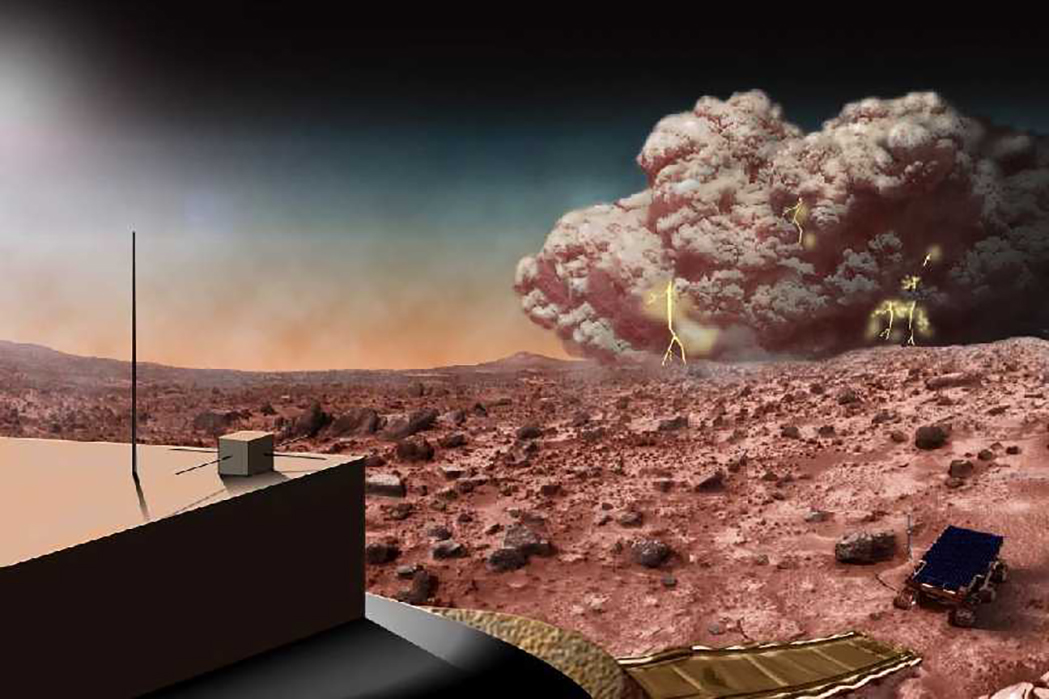
NASA is trying to better understand dust storms and other Martian weather phenomenon. Credit: NASA
Day and nighttime temperatures on Mars can fluctuate by as much as 80 or 90 degrees. MEDA will help scientists track those changes as well as measure radiation from the surface, to understand how much the sun heats the air. This solar heating causes changes in the Martian wind and can help scientists better understand the Martian water cycle.
Understanding the current weather patterns and environment could also lead to a better understanding of Mars’s history and shed light on how it transitioned from a warm, habitable planet into the dusty, cold desert we see today.
RIMFAX
The Mars 2020 rover will be equipped with a ground-penetrating radar instrument: Radar Imager for Mars’ Subsurface Experiment, or RIMFAX.
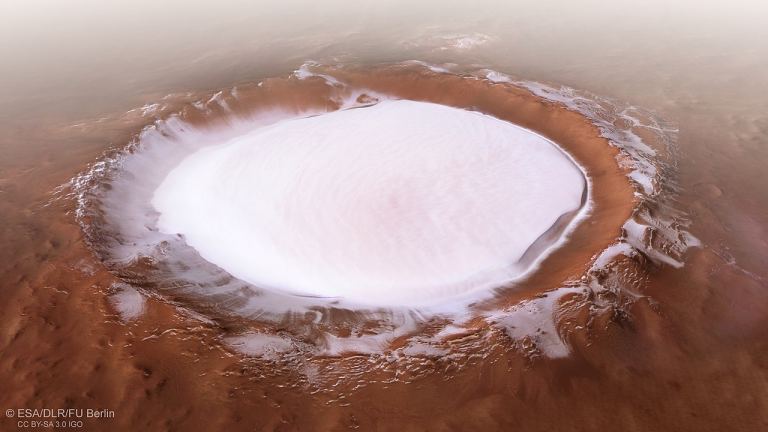
The Korolev crater on Mars as seen by Mars Express. Credit: ESA/DLR/FU Berlin
Scientists hope that RIMAX will help them study the history of Jezero Crater by peering below the surface. With the instrument’s help, scientists will be able to look at subsurface rock and ice. To date, only orbital observations have been made of the Martian polar ice, but this will increase our understanding of the planet’s inner geology.
The Mars 2020 rover is scheduled to launch in July of 2020, and will land on the Martian surface six months later. If all goes according to plan, we may finally be able to answer the question of whether or not Mars once hosted life.
News
SpaceX Ax-4 Mission prepares for ISS with new launch date
SpaceX, Axiom Space, and NASA set new launch date for the Ax-4 mission after addressing ISS & rocket concerns.
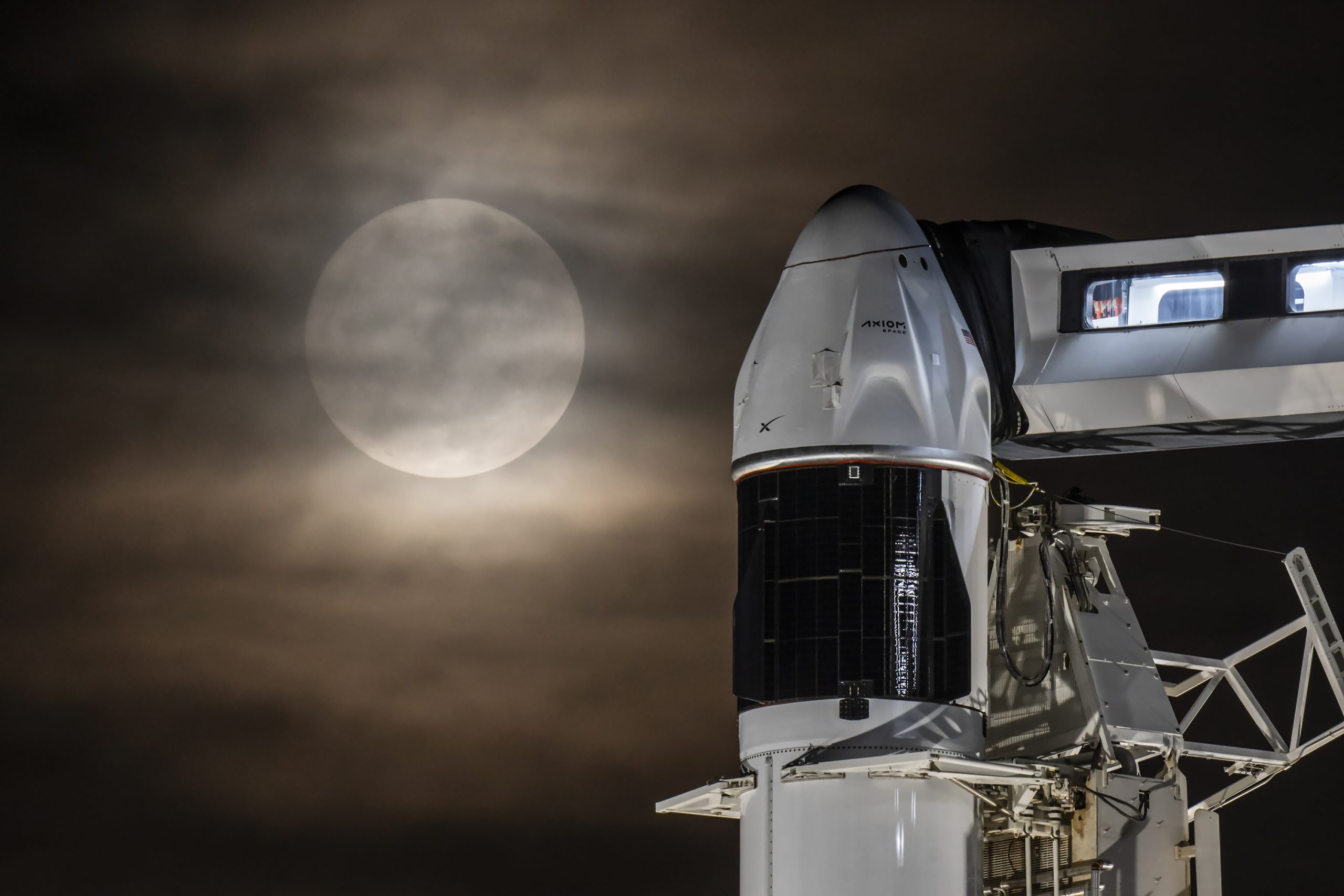
SpaceX is preparing for a new launch date for the Ax-4 mission to the International Space Station (ISS).
SpaceX, Axiom Space, and NASA addressed recent technical challenges and announced a new launch date of no earlier than Thursday, June 19, for the Ax-4 mission. The delay from June 12 allowed teams to assess repairs to small leaks in the ISS’s Zvezda service module.
NASA and Roscosmos have been monitoring leaks in the Zvezda module’s aft (back) segment for years. However, stable pressure could also result from air flowing across the hatch seal from the central station. As NASA and its partners adapt launch schedules to ensure station safety, adjustments are routine.
“Following the most recent repair, pressure in the transfer tunnel has been stable,” a source noted, suggesting the leaks may be sealed.
“By changing pressure in the transfer tunnel and monitoring over time, teams are evaluating the condition of the transfer tunnel and the hatch seal between the space station and the back of Zvezda,” the source added.
SpaceX has also resolved a liquid oxygen leak found during post-static fire inspections of the Falcon 9 rocket, completing a wet dress rehearsal to confirm readiness. The Ax-4 mission is Axiom Space’s fourth private astronaut trip to the ISS. It will launch from NASA’s Kennedy Space Center in Florida on a Falcon 9 rocket with a new Crew Dragon capsule.
“This is the first flight for this Dragon capsule, and it’s carrying an international crew—a perfect debut. We’ve upgraded storage, propulsion components, and the seat lash design for improved reliability and reuse,” said William Gerstenmaier, SpaceX’s vice president of build and flight reliability.
The Ax-4 mission crew is led by Peggy Whitson, Axiom Space’s director of human spaceflight and former NASA astronaut. The Ax-4 crew includes ISRO astronaut Shubhanshu Shukla as pilot, alongside mission specialists Sławosz Uznański-Wiśniewski from Poland and Tibor Kapu from Hungary. The international team underscores Axiom’s commitment to global collaboration.
The Ax-4 mission will advance scientific research during its ISS stay, supporting Axiom’s goal of building a commercial space station. As teams finalize preparations, the mission’s updated launch date and technical resolutions position it to strengthen private space exploration’s role in advancing space-based innovation.
News
Starlink India launch gains traction with telecom license approval
Starlink just secured its telecom license in India! High-speed satellite internet could go live in 2 months.

Starlink India’s launch cleared a key regulatory hurdle after securing a long-awaited license from the country’s telecom ministry. Starlink’s license approval in India paves the way for commercial operations to begin, marking a significant milestone after a three-year wait.
The Department of Telecommunications granted Starlink a Global Mobile Personal Communication by Satellite (GMPCS) license, enabling it to roll out its high-speed internet service. Local reports hinted that Starlink plans to launch its services within the next two months. Starlink India’s services are expected to be priced at ₹3,000 per month for unlimited data. Starlink service would require a ₹33,000 hardware kit, including a dish and router.
“Starlink is finally ready to enter the Indian market,” sources familiar with the rollout plans confirmed, noting a one-month free trial for new users.
Starlink’s low-Earth orbit satellite network promises low-latency, high-speed internet that is ideal for rural India, border areas, and hilly terrains. With over 7,000 satellites in orbit and millions of global users, Starlink aims to bridge India’s digital divide, especially in areas with limited traditional broadband.
Starlink has forged distribution partnerships with Indian telecom giants Reliance Jio and Bharti Airtel to streamline deployment and retail logistics. However, the company still awaits spectrum allocation and final clearances from India’s space regulator, IN-SPACe, and national security agencies before its full launch, expected before August 2025.
India’s satellite internet market is becoming increasingly competitive, with Starlink joining rivals like OneWeb and Jio Satellite Communications. While Starlink positions itself as a premium offering, its entry has sparked debate among domestic telecom operators over spectrum pricing.
Local reports noted that other players in the industry have raised concerns over the lower regulatory fees proposed for satellite firms compared to terrestrial operators, highlighting tensions in the sector.
Starlink India’s launch represents a transformative step toward expanding internet access in one of the world’s largest markets. Starlink could redefine connectivity for millions in underserved regions by leveraging its advanced satellite technology and strategic partnerships. As the company navigates remaining regulatory steps, its timely rollout could set a new standard for satellite internet in India, intensifying competition and driving innovation in the telecom landscape.
Elon Musk
SpaceX to decommission Dragon spacecraft in response to Pres. Trump war of words with Elon Musk
Elon Musk says SpaceX will decommission Dragon as a result of President Trump’s threat to end his subsidies and government contracts.
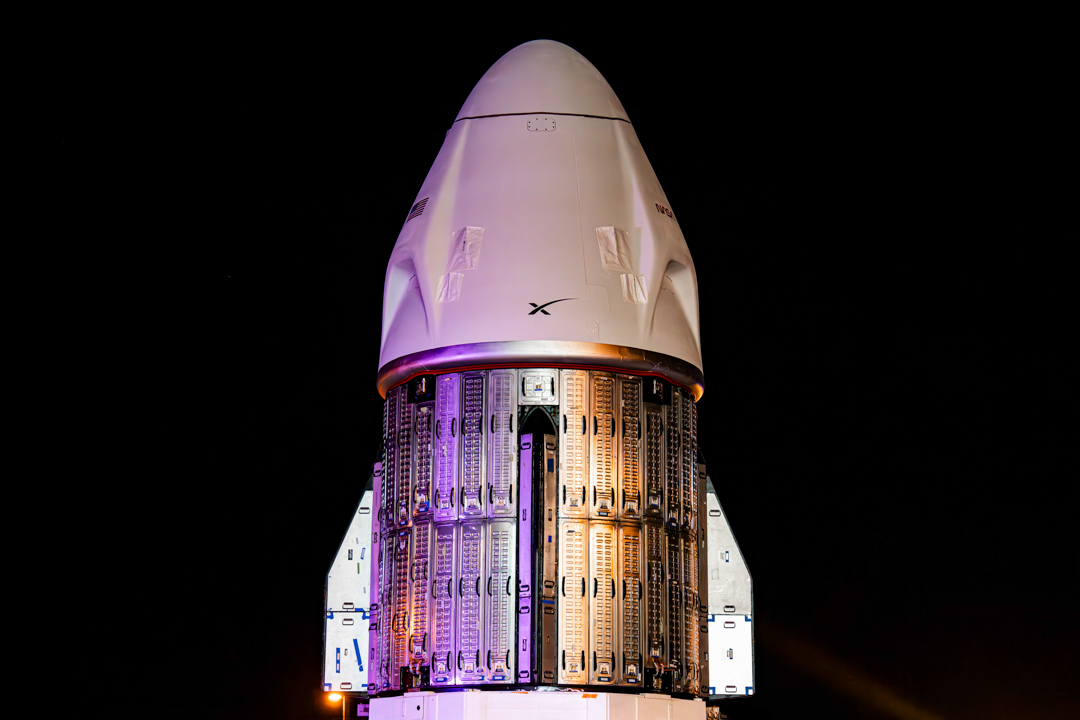
SpaceX will decommission its Dragon spacecraft in response to the intense war of words that President Trump and CEO Elon Musk have entered on various social media platforms today.
President Trump and Musk, who was once considered a right-hand man to Trump, have entered a vicious war of words on Thursday. The issues stem from Musk’s disagreement with the “Big Beautiful Bill,” which will increase the U.S. federal deficit, the Tesla and SpaceX frontman says.
How Tesla could benefit from the ‘Big Beautiful Bill’ that axes EV subsidies
The insults and threats have been brutal, as Trump has said he doesn’t know if he’ll respect Musk again, and Musk has even stated that the President would not have won the election in November if it were not for him.
President Trump then said later in the day that:
“The easiest way to save money in our Budget, Billions and Billions of Dollars, is to terminate Elon’s Government Subsidies and Contracts. I was always surprised that Biden didn’t do it!”
Musk’s response was simple: he will decommission the SpaceX capsule responsible for transporting crew and cargo to the International Space Station (ISS): Dragon.
🚨 Elon says Dragon will be decommissioned immediately due to President Trump’s threats to terminate SpaceX’s government contracts https://t.co/XNB0LflZIy
— TESLARATI (@Teslarati) June 5, 2025
Dragon has completed 51 missions, 46 of which have been to the ISS. It is capable of carrying up to 7 passengers to and from Earth’s orbit. It is the only spacecraft that is capable of returning vast amounts of cargo to Earth. It is also the first private spacecraft to take humans to the ISS.
The most notable mission Dragon completed is one of its most recent, as SpaceX brought NASA astronauts Butch Wilmore and Suni Williams back to Earth after being stranded at the ISS by a Boeing Starliner capsule.
SpaceX’s reluctance to participate in federally funded projects may put the government in a strange position. It will look to bring Boeing back in to take a majority of these projects, but there might be some reluctance based on the Starliner mishap with Wilmore and Williams.
SpaceX bails out Boeing and employees are reportedly ‘humiliated’
-

 Elon Musk3 days ago
Elon Musk3 days agoTesla investors will be shocked by Jim Cramer’s latest assessment
-

 News1 week ago
News1 week agoTesla Robotaxi’s biggest challenge seems to be this one thing
-

 News2 weeks ago
News2 weeks agoTexas lawmakers urge Tesla to delay Austin robotaxi launch to September
-

 Elon Musk2 weeks ago
Elon Musk2 weeks agoFirst Look at Tesla’s Robotaxi App: features, design, and more
-

 Elon Musk2 weeks ago
Elon Musk2 weeks agoxAI’s Grok 3 partners with Oracle Cloud for corporate AI innovation
-

 News2 weeks ago
News2 weeks agoSpaceX and Elon Musk share insights on Starship Ship 36’s RUD
-

 News2 weeks ago
News2 weeks agoWatch Tesla’s first driverless public Robotaxi rides in Texas
-

 News2 weeks ago
News2 weeks agoTesla has started rolling out initial round of Robotaxi invites






